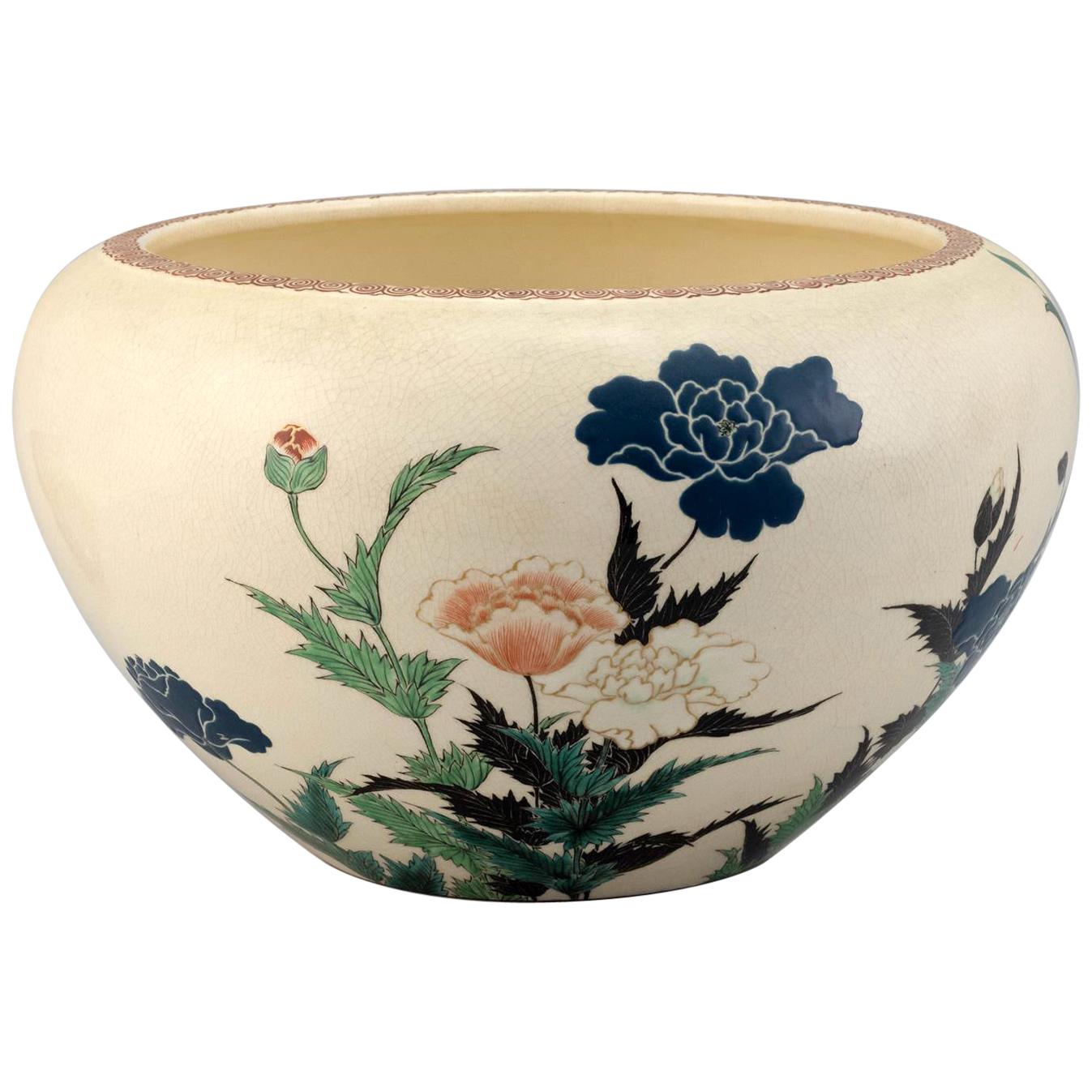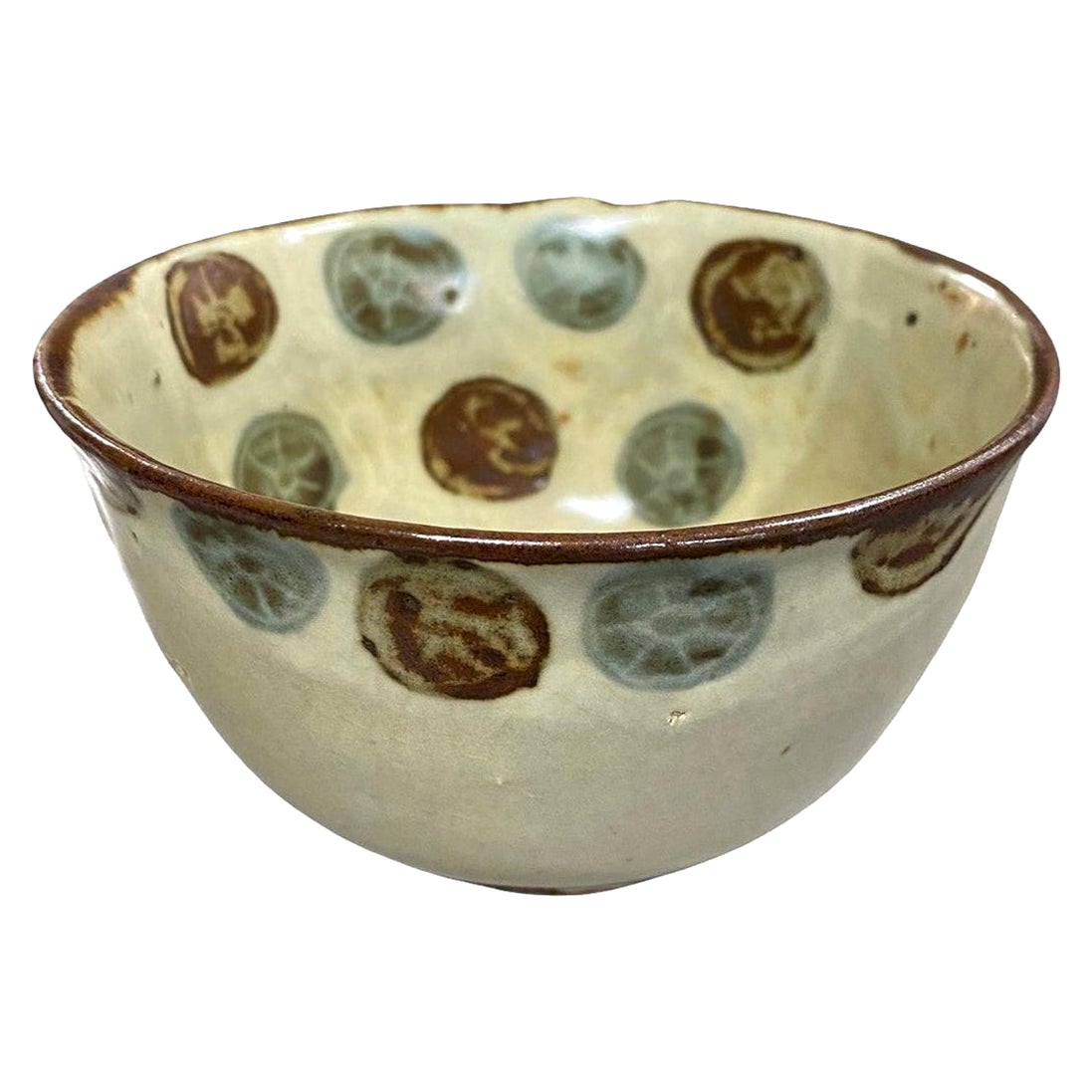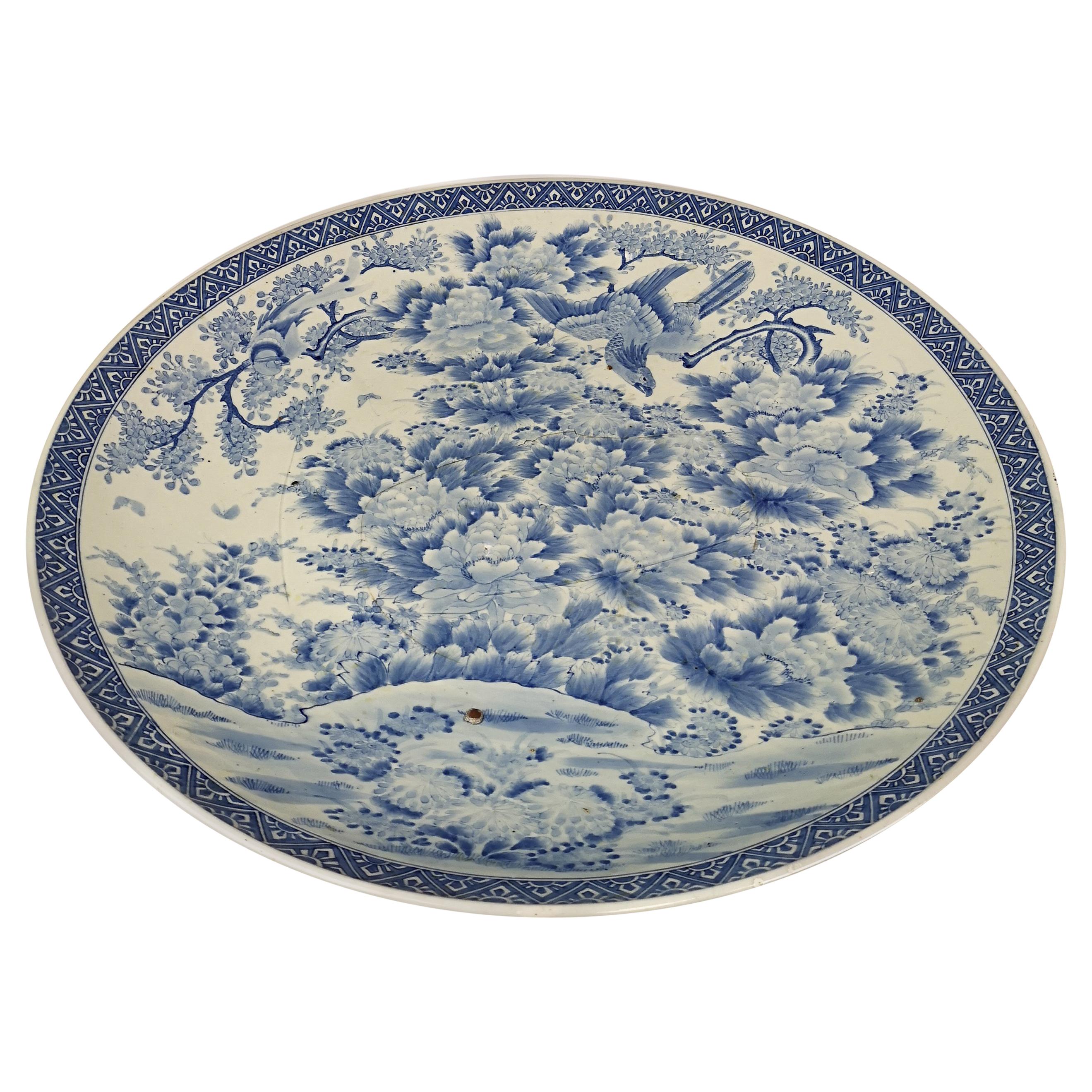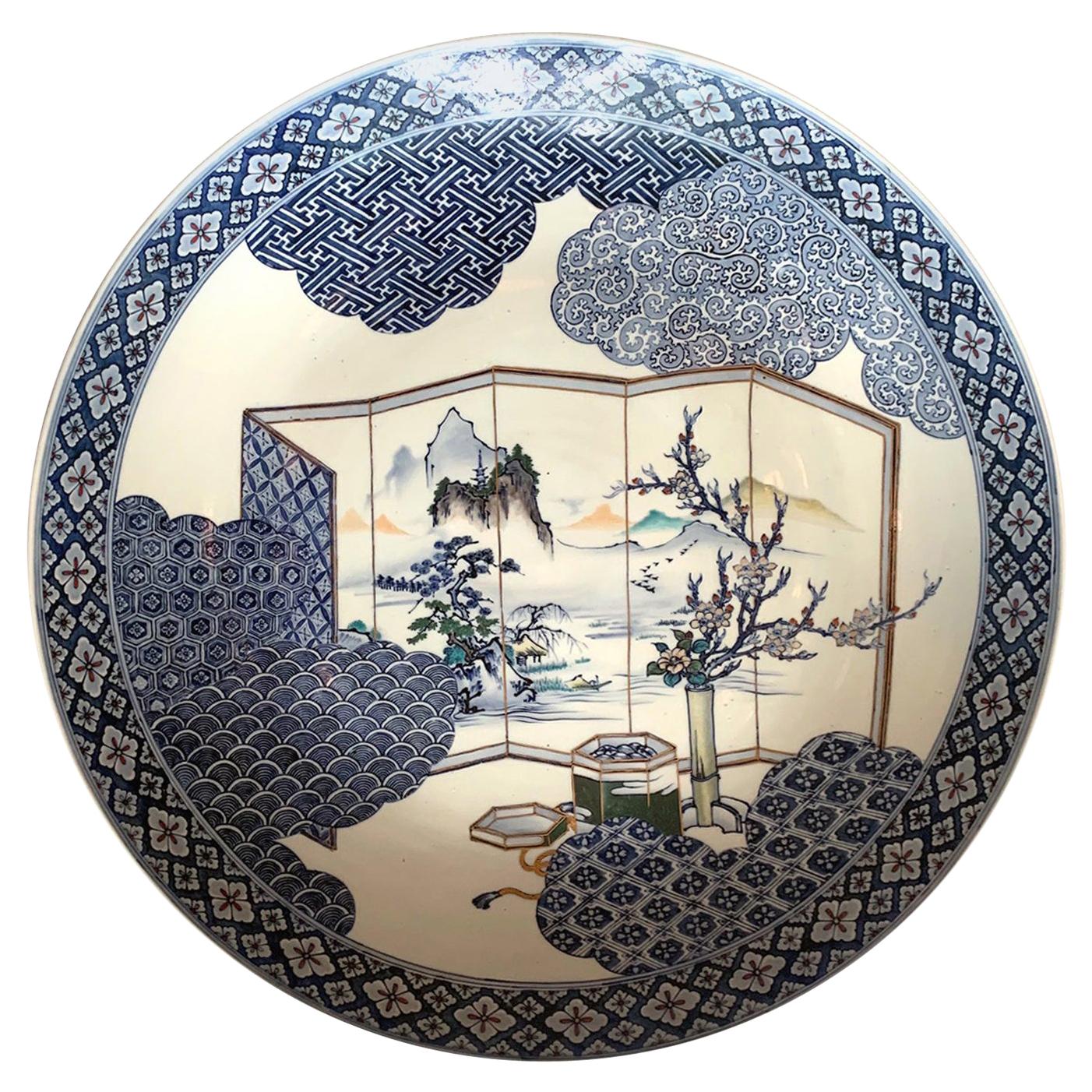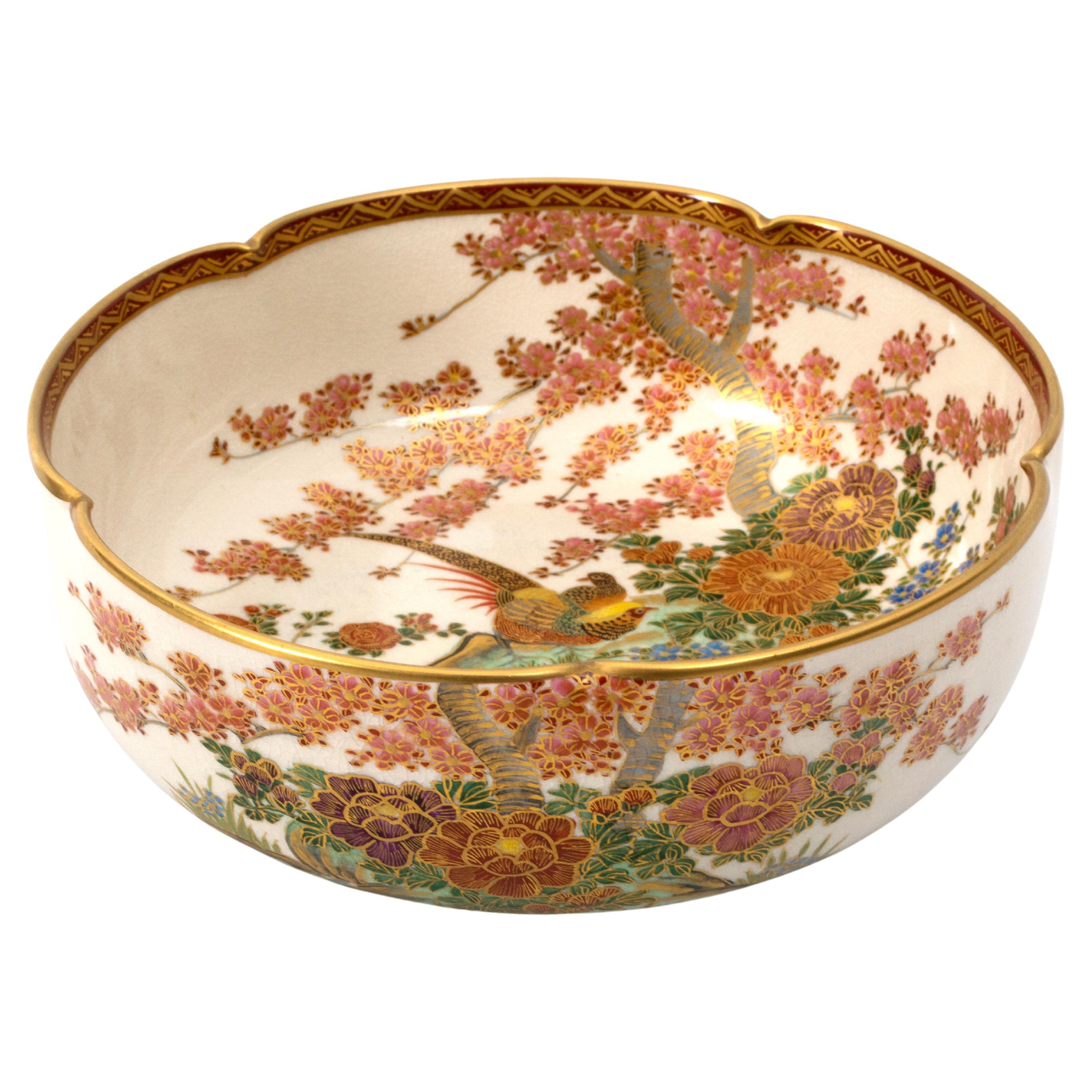Items Similar to Japanese Ceramic Dish Meiji Ogata Kenzan
Want more images or videos?
Request additional images or videos from the seller
1 of 12
Japanese Ceramic Dish Meiji Ogata Kenzan
About the Item
A Japanese ceramic shallow dish in square form with rounded corners from Meiji period in the style of Ogata Kenzan. The dish features a cream color crackled glaze with iron underglaze paint that evokes the aesthetic of ink painting. A bundle of floral design is placed sparsely in the center, accompanied by a line of poetry in Kanji that translates as "the fragrance at the transition from spring to summer". It is signed Kenzan and marked with two red seals. The exterior skirt of the dish is decorated with cloud designs. The dish comes with wood storage box. Based on the style of the painting and calligraphy, we think that the dish was likely made in Meiji period circa 19th century in the style of Ogata Kenzan.
- Dimensions:Height: 8.25 in (20.96 cm)Width: 8.25 in (20.96 cm)Depth: 1 in (2.54 cm)
- Style:Meiji (Of the Period)
- Materials and Techniques:
- Place of Origin:
- Period:
- Date of Manufacture:19th Century
- Condition:Wear consistent with age and use. some surface wear consistent with age.
- Seller Location:Atlanta, GA
- Reference Number:1stDibs: LU945020285512
About the Seller
5.0
Platinum Seller
These expertly vetted sellers are 1stDibs' most experienced sellers and are rated highest by our customers.
Established in 2006
1stDibs seller since 2010
480 sales on 1stDibs
Typical response time: <1 hour
- ShippingRetrieving quote...Ships From: Atlanta, GA
- Return PolicyA return for this item may be initiated within 2 days of delivery.
More From This SellerView All
- Japanese Yoshidaya Saiko Kutani Ceramic DishBy YoshidayaLocated in Atlanta, GAA Japanese Ao-Kutani stoneware dish with overglaze decoration in the shape of barbed quatrefoil shape from late Edo period, circa early mid-19th century. Around 1804, 100 years after Ko-Kutani (old-Kutani) ware disappeared abruptly after thriving from 1655-early 1700s, saiko-kutani (revived-kutani) was attempted by many kilns and several distinguished styles developed. Among them, Yoshidaya kiln attempted to revive the original style of Ko-Kutani known as Aote, which employed four dark colors: green, yellow, dark blue/black and aubergine to create bold and striking design. The Yoshidaya production was short-lived and lasted roughly from 1823-1831. This dish is likely dated from this period or shortly after. The overglaze design centered around a crouching tiger under a black bamboo grove in a deep green background, surrounded by luxuriant banana leaves in green and aubergine with black outlines. The base of a similar concentric barbed quatrefoil design is further decorated with black foliage outlines and marked with a square Fuku mark. For a Yoshidaya dish with identical shape but different landscape decoration, see lot 79 of sale 6547 Christie's London. Important Japanese and Chinese Art...Category
Antique 19th Century Japanese Japonisme Ceramics
MaterialsCeramic
- Japanese Studio Ceramic Centerpiece Okumura Shozan Meiji PeriodLocated in Atlanta, GAA beautifully crafted large ceramic bowl as a centerpiece by Okumura Shozan (1842-1905) in the Kyo-yaki (kyoto ware) style. A Classic ovoid form with flatly...Category
Antique Late 19th Century Japanese Japonisme Ceramics
MaterialsCeramic
- Massive Japanese Arita Presentation Porcelain Plate Meiji PeriodLocated in Atlanta, GAThis massive Japanese Arita plate was made in Hizen, circa 1890-1910s, at the end of Meiji period by a potter named Takeshige Yoshisuke who was active in A...Category
Antique Late 19th Century Japanese Japonisme Ceramics
- Japanese Ceramic Bowl Makuzu Kozan Utusushi KenzanBy Makuzu KozanLocated in Atlanta, GAA rare ceramic bowl with over glaze painted decoration by Japanese imperial potter Makuzu Kozan ((1842–1916). Unlike the better known works Kozan made for the expositions in the west and export to the foreign market, this piece exemplifies his work for the domestic market and the tea ceremony. The bowl was made in the so called "Utusushi" Ogata Kenzan (1663-1743), an celebrated Edo painter and ceramicist. Utusushi is loosely translated as "in the spirit of". It is not at all a simple imitation of a master, but a Japanese concept of embracing the spiritual essence of a master while the creator is free to mix in his or her own unique artistic interpretation and flavor. The bowl was made to hold fruits during the tea ceremony. It has a very distinguished form with a circular lower body morphing into a square upper portion that further opening with flared rim. The surface has a grey glaze onto which Asagao flowers (Japanese morning glory) on the vines were painted in a free and poetic style. White was used for the petals, green for the leaves with touches of gold highlight. Asagao, the symbol of the summer was rendered in the spirit of Ogata Kenzan, and interestingly the shape of the blossom echoes the unique form the bowl. It was likely reserved for the tea ceremony during the summer months. Under the base, Kozan was signed in black on an white porcelain plaque inlay. For two similar examples of Kozan's work Utusushi Kenzan, see Page 168-169 of the book: Sekai ni Aisa Reta ya Kimono Miyagawa Kozan Makuzu...Category
Antique Early 1900s Japanese Japonisme Ceramics
MaterialsCeramic
- Antique Thai Celadon Stemmed Dish Sukhothai SawankhalokLocated in Atlanta, GAA celadon stemmed dish with underglaze deep blue decoration from Sukhothai (a former Kingdom in nowadays central Thailand) circa 14th-16th century. The pedestal dish was a typical ceramic output from Sawankhalok region, likely one of the kilns in Sri Sachanalai that thrived during 14th-15th century. Sukhothai ceramics made a large portion of export from Asia during that period due to the political policy in Ming Dynasty that banned the ocean faring (the so called Ming Gap). This stemmed dish, likely an export item, was modeled in a Classic Chinese form. The under-glaze deep blue decorations depicting the scrolling vines and flowers, as well as the archaic band around the base, are also reminiscent to the designs found in blue and white porcelain in Ming dynasty. The piece shows a fine crackles and age wear on the dish surface, an indication of appropriate patina. Under the reddish slip paint of the base, the gray paste can be discerned in small area, which is also a characteristic of the Thai celadon...Category
Antique 15th Century and Earlier Thai Archaistic Ceramics
MaterialsCeramic
- Fine Japanese Ceramic Vase Makuzu Kozan Meiji PeriodBy Makuzu KozanLocated in Atlanta, GAA Japanese long neck porcelain vase circa 1900-1910s by the studio of Miyagawa Kozan (1842–1916), one of the most established and collected Japanese ceramist from the end of Meiji Period. Commonly known as Makuzu Kozan, which also appears as the signature on his work, his originally birth name was Miyagawa Toranosuke. He was the appointed artist to the Japanese Imperial household and his work was exhibited in many international fairs that the Meiji government participated at the turn of the century. This vase features an elegant Classic form with a slender neck and slightly flared mouth above a baluster body. It was finely painted with two swimming carps in a copper red underglaze among green ribbons like waves. The background display a brilliant verdant green overall, Around the fish a poetic hazy effect was emphasized for a visual complexity by Fuki-e (the blow painting), an invention in Kozan's studio. The new technical development of chemical colors from the west was embraced circa 1900s in Kozan studio. This empowered the more creative experiments with not only colors, but also concept of dimension, which led Makuzu Kozan's work to become a bridge between East and West aesthetics. This is particularly evident in this vase with the Masterly details of the brush strokes, the expertly employment of gradient of color, and a very realistic and detailed rendering of the fish and their vivid motions. For two similar examples of Kozan's work with similar carps decoration, see Page 148-149 of the book: Sekai ni Aisa Reta ya Kimono Miyagawa Kozan Makuzu...Category
Early 20th Century Japanese Meiji Ceramics
MaterialsCeramic
You May Also Like
- Ogata Kenzan Signed Japanese Asian Edo Period Pottery Tea Bowl ChawanLocated in Studio City, CAA spectacularly designed and beautifully made Chawan tea bowl dating back to the Edo period. This work is attributed to Ogata Kenzan who is widely conside...Category
Antique 18th Century Japanese Edo Ceramics
MaterialsPottery
- Massive Antique Japanese Arita Porcelain Emperor MeijiBy AritaLocated in Hillringsberg, SEThis very large plate made in Japan during the Emperor Meiji time 1868-1912. Wonderful blue pattern on fine porcelain. There is a crack that’s shown thro...Category
Antique 19th Century Japanese Japonisme Ceramics
MaterialsCeramic
- Antique Japanese Lobed Satsuma Bowl Meiji Period C.1900Located in London, GBAntique Japanese Lobed Satsuma Bowl Meiji Period C.1900 A Kobe Japan Satsuma bowl, of lobed pedestal form hand painted inside and out. A hand-painted natu...Category
Early 20th Century Japanese Ceramics
MaterialsEarthenware
- Large Japanese Satsuma Earthenware Dish, Meiji Era JapanLocated in Saverne, Grand EstLarge Satsuma earthenware dish decorated with "one hundred boys". Signed on the reverse. Japan around 1900Category
Early 20th Century Japanese Meiji Ceramics
MaterialsEarthenware
- Japanese Satsuma Earthenware Dish, Meiji Era JapanLocated in Saverne, Grand EstExceptional Satsuma earthenware dish of incredible finesse. A work of art which, without a doubt, required several dozen hours of meticulous work. But what a result !!! Japan around ...Category
Early 20th Century Japanese Ceramics
MaterialsEarthenware
- Imari porcelain Carp dish, Arita, Japan, c. 1890, Meiji Period.By AritaLocated in Gargrave, North YorkshireJapanese Imari porcelain Carp dish, Arita, c. 1890, Meiji Period. The canted rectangular dish, moulded to the centre with a large carp, in low relief, hand painted in typical Imari c...Category
Antique 1890s Japanese Meiji Ceramics
MaterialsPorcelain

